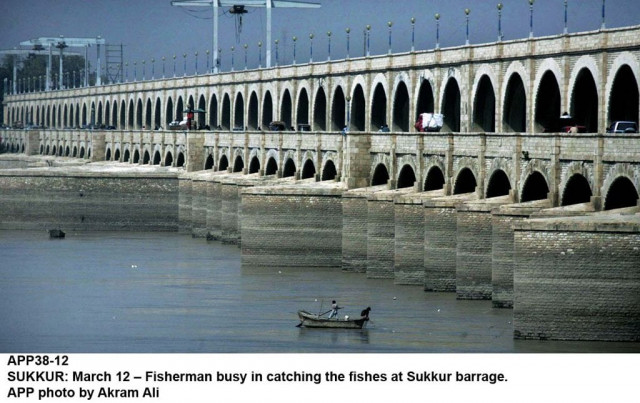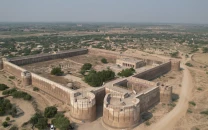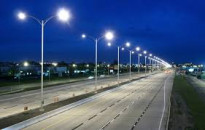Renovated: Museum takes visitors on a walk through Sukkur Barrage history
A big and beautiful model of Sukkur Barrage is illuminated with spotlights.

The construction of the barrage started in 1923 with the approval of the then governor of Bombay Sir George Ambrose Lloyd after whom this barrage was named The Lloyd Barrage. PHOTO: APP
A visit to the recently renovated Sukkur Barrage Museum and its new photo gallery allows visitors to experience a guided tour through the history of its step-by-step-construction. Among small models, a big and beautiful model of Sukkur Barrage is illuminated with spotlights.
Some samples of the construction material, including stone, crush stone, Portland cement, gravel and others are kept in a box covered with glass, while models of its arches, gates and piers are displayed for viewing.
The construction of the barrage started in 1923 with the approval of the then governor of Bombay Sir George Ambrose Lloyd after whom this barrage was named The Lloyd Barrage. Sir Arnold Albert Musto was the architect and engineer of the Sukkur Barrage.
The museum was established long after the barrage. Recently, new life was breathed into the museum through renovations by painting the models in matte finish and installing spotlights. The photo gallery, however, is a new addition and contains pictures of Sir George Ambrose Lloyd and Sir Arnold Albert Musto and a guide to the step-by-step construction of the barrage and its off-taking canals.
Besides this, the machinery and equipment used for the construction of Sukkur barrage and later for its upkeep and maintenance have also been displayed outside the museum, which include a heavy duty crane, a boat, a small road roller and a lathe machine for cutting and designing nuts and bolts.
Sukkur Barrage control room’s in-charge Abdul Aziz Soomro told The Express Tribune that the crane is used to pull and hang the roller train attached with the gates to replace the damaged rollers. According to him, the crane was deployed at Sukkur Barrage till 1986, after which it was replaced by a heavy crane.
Talking about the small road roller, he said it was used in the construction of roads around Sukkur Barrage and the streets of Barrage Colony, but now it is not used any more. Briefing about the museum, he said the purpose of its establishment was to educate people about the step-by-step construction of this masterpiece of British engineering. Talking about the small model of Sukkur Barrage, he said it is easily transported from one place to the other for the purpose of briefing, while the bigger model is fixed and cannot be removed.
Many people visit the museum on a daily basis, which remains open between 9am and 5pm. A family, which had come from Khairpur to visit the museum, said that models of Sukkur Barrage, its gates and arches are of great interest to them and the children. The addition of the photo gallery is a good effort and one can see how this mammoth barrage was constructed, they said. “It is amazing to see how its seven off-taking canals are catering to the irrigation needs of almost half of Sindh and some parts of Balochistan,” they added.
Published in The Express Tribune, February 15th, 2014.



















COMMENTS
Comments are moderated and generally will be posted if they are on-topic and not abusive.
For more information, please see our Comments FAQ